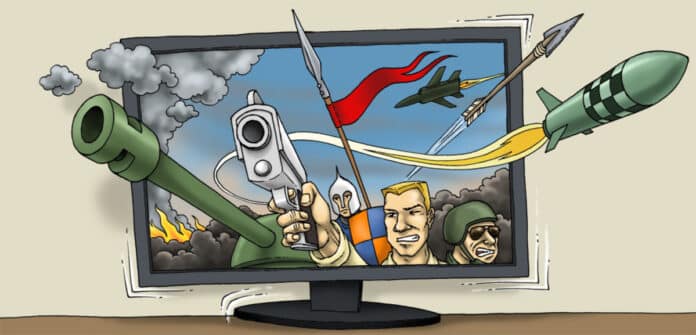Just as we might have been hoping that our children and young people can emerge from under the blanket of pandemic anxiety and concern that has placed at risk their carefree days of childhood so along rolls another ethereal risk in the cloak of Russia’s incursion of, and violence towards, the people of Ukraine. What we know from bitter and repeat experience is that in times of war and combat it will be the children of the Ukraine whose lives will be unforgivably impacted. My first thoughts and greatest intentions are to them.
At the same time, we need to think very carefully about our own children – who once again must bear witness to violence and destruction. Graphic images and footage of Russia’s incursion into Ukraine aren’t easy for anyone to process, but they may be especially difficult for children and young people, particularly if they’ve experienced trauma or witnessed violence themselves.
We know in 2022 that the daily, hourly, indeed minute by minute coverage on social and multimedia sites means that the realities of war become a diet of toxic stress if we don’t manage that for, and with them.
Our instinct as parents/caregivers may be to shield children from the violence unfolding on television and social media, but best advice is to whilst limiting exposure, acknowledge and discuss conflict, rather than ignore it. Be cautious, too, about the algorithms of social media that boost exposure for popular images or clips may bring the news to your child’s social media feed even if it is not the type of post they would normally click. More on keeping your child safe on line here Keeping Children Safe Online | SWGfL
Regardless of a child’s age, the goal of talking with them about the conflict is to ease concerns, clear confusion and answer questions and most importantly to listen deeply.
Resist the parental urge to brush away the fear instead focus on listening to your child and let them guide the conversation, children don’t really expect us to solve every problem just to hold the feelings with and for them.
Our children look to us for so many things but often firstly a sense of protection, security and reassurance.
Thinking then of our children who have already been exposed to trauma, our first action should be to limit exposure, for these children already know we cannot promise them 100% protection it is a more layered reality but they need an even higher level of reassurance and a deeper level of listening. We are here to support them in managing this new reality with Playfulness, Acceptance, Curiosity and Empathy. Normalise whatever feelings they may be having about the news by telling them it’s OK to feel sad, scared or angry.
Oh and of course, the best way for us to do this is to first accept those same feelings in ourselves– its ok to be scared, its ok to be angry, its ok to be sad and I’m here to help.
With loving thoughts and prayers for all
Theresa Leavey, Director of Dorset Children’s Services
If you like our content please keep us going for as little as £2 a month https://dorseteye.com/donate/







